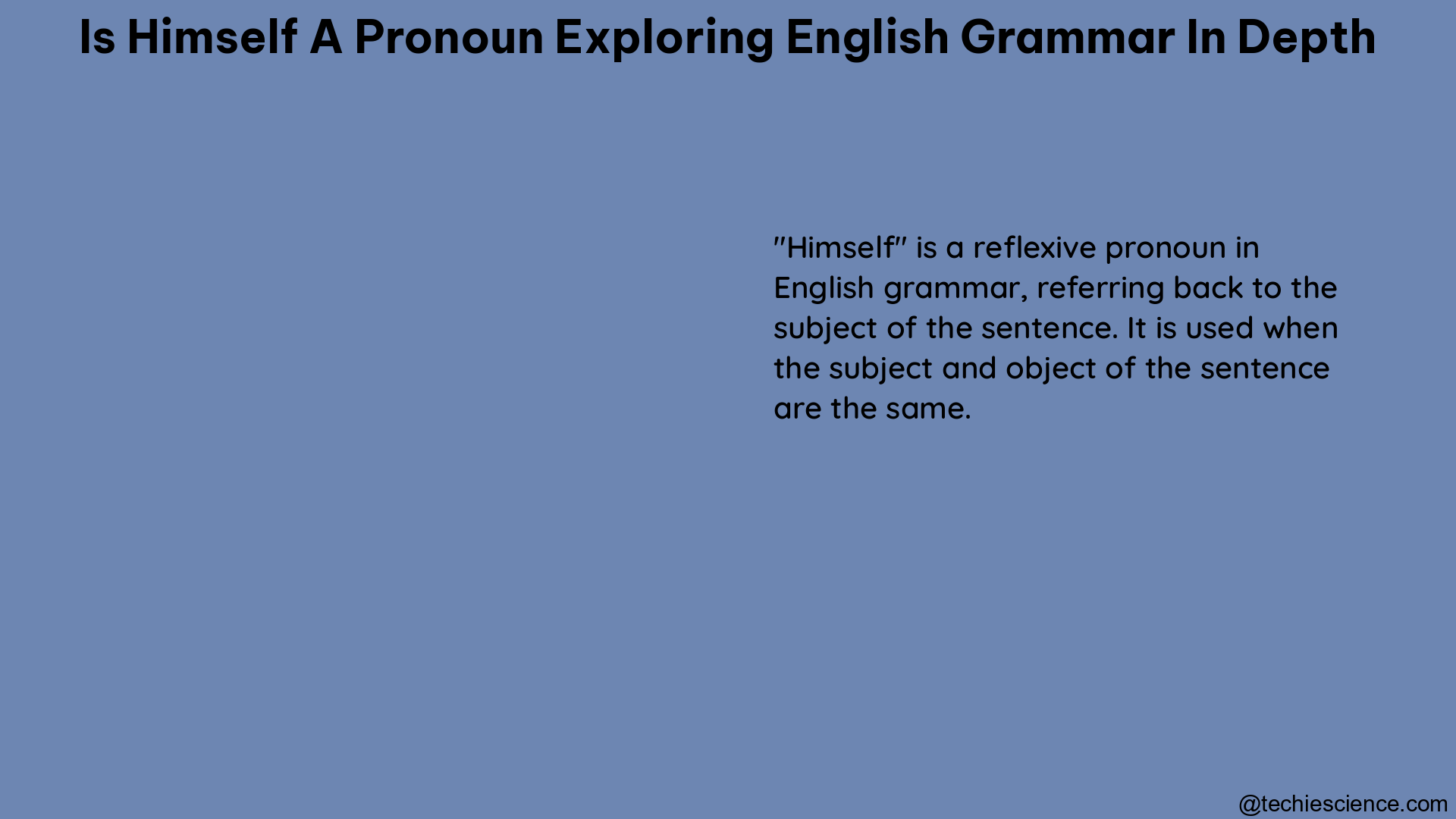“Himself” is indeed a pronoun, specifically a reflexive pronoun, which is used to refer back to the subject of a sentence, indicating that the subject is performing the action on themselves. Pronouns are an essential part of the English language, and understanding their usage and nuances is crucial for effective communication.
Reflexive Pronouns
Reflexive pronouns, such as “himself,” “herself,” “itself,” “themselves,” and “ourselves,” are used to indicate that the subject and the object of the action are the same. They add emphasis to the subject by showing that the action is being performed on the subject itself. For example:
- “He cut himself while shaving.” (Here, “himself” refers back to “he,” indicating that the action of cutting was performed on the subject himself.)
Reflexive pronouns are used in situations where the subject and the object of the action are the same. They help to avoid repetition and make the sentence more concise and clear.
Intensive Pronouns

Intensive pronouns, also known as emphatic pronouns, are used to add emphasis to a noun or another pronoun in a sentence. They are often used to clarify or stress that the subject is performing the action. For example:
- “I myself baked this cake.” (Here, “myself” adds emphasis to “I,” stressing that the speaker was the one who baked the cake.)
Intensive pronouns are used to highlight the subject or to emphasize the subject’s involvement in the action.
Key Differences between Reflexive and Intensive Pronouns
- Referent: Reflexive pronouns refer back to the subject of the sentence, while intensive pronouns add emphasis to a noun or another pronoun.
- Purpose: Reflexive pronouns indicate that the subject and the object of the action are the same, while intensive pronouns stress the subject’s involvement in the action.
- Interchangeability: Reflexive and intensive pronouns cannot be used interchangeably, as they serve different grammatical functions.
Examples
- Reflexive Pronoun:
-
“She bought herself a new dress.” (The subject “she” is performing the action of buying on herself.)
-
Intensive Pronoun:
- “The president himself attended the event.” (The intensive pronoun “himself” emphasizes that the president was the one who attended the event.)
Common Mistakes
- Incorrect use of reflexive pronouns: Using reflexive pronouns in place of subjects or objects in sentences where they do not refer back to anything.
-
Example: “Myself went to the store.” (Incorrect, should be “I went to the store.”)
-
Interchanging reflexive and intensive pronouns: Using intensive pronouns in place of reflexive pronouns, or vice versa, which can change the meaning of the sentence.
- Example: “She herself bought a new dress.” (Incorrect, should be “She bought herself a new dress.”)
Conclusion
Pronouns, particularly reflexive and intensive pronouns, play a crucial role in English grammar. Understanding the differences between these two types of pronouns and their proper usage is essential for effective communication and writing. By mastering the nuances of pronouns, you can convey your intended meaning with clarity and precision.
Reference Links
- https://ell.stackexchange.com/questions/85879/usage-of-themselves-and-reflexive-pronouns
- https://phoenixenglishlang.com/themself-or-themselves/
- https://www.wordrake.com/blog/lets-talk-about-myself-an-explanation-of-reflexive-pronouns-and-first-person-pronouns
- https://lambdageeks.com/is-himself-a-pronoun-exploring-english-grammar-in-depth/
- https://contentatscale.ai/blog/pronoun/

The lambdageeks.com Core SME Team is a group of experienced subject matter experts from diverse scientific and technical fields including Physics, Chemistry, Technology,Electronics & Electrical Engineering, Automotive, Mechanical Engineering. Our team collaborates to create high-quality, well-researched articles on a wide range of science and technology topics for the lambdageeks.com website.
All Our Senior SME are having more than 7 Years of experience in the respective fields . They are either Working Industry Professionals or assocaited With different Universities. Refer Our Authors Page to get to know About our Core SMEs.